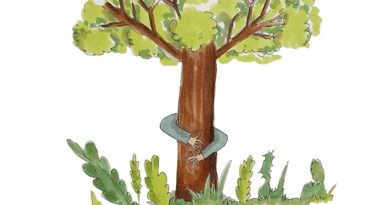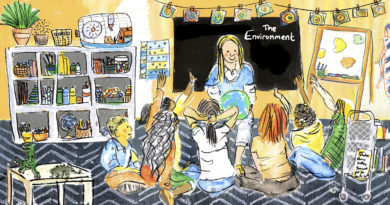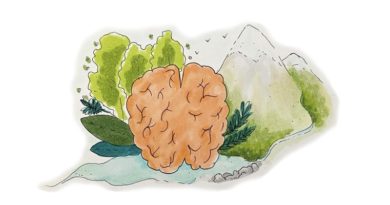Personality and Relationships

Suppose it is so that people differ in temperament and that therefore their behavior is just as inborn as their body build. Then we do violence to others when we assume such differences to be flaws and afflictions. David Keirsey
In my early 20s, I was a waitress for a while. One of my co-workers was a lovely, bright woman a year or so younger than I, who had married at age 20. When I asked why she had decided to settle down so young, she explained that she had met someone whose strong points she really liked, and whose weak points she could accept. According to her, this did not happen every day, so she married the man.
Romantic idealist that I was (and postmodern feminist that I considered myself to be), I saw this reasoning as too practical, and felt she had settled down too early. Yet I really liked and respected this woman, so her words have stayed with me over the past 20 years. Success in a relationship does indeed seem to require getting enough of what you need from someone so that you can be open to the parts of him (or her) that you do not understand or agree with.
Much of what we need in relationships is, naturally, dictated by who we are – by our personalities. Personality, according to anthropologist Helen Fisher, is defined as “that distinct cluster of thoughts and feelings that color all of a person’s actions.” One’s personality is composed of “two fundamentally different types of traits: those of character and those of temperament.” Character is largely built by your experiences, but temperament is your “biologically based tendencies.”
There are currently at least two prominent “systems” for sorting and describing personality – and I do not mean astrology and numerology. One of these systems was created by the aforementioned Helen Fisher, an anthropology professor and human behavior researcher at Rutgers University and the author of five books on romantic interpersonal attraction. The other comprises the Myers-Briggs Type Indicator as well as the closely related Keirsey Temperament Sorter (hereafter referred to as MBTI/KTS).
Helen Fisher’s Personality Types
Fisher developed her system fairly recently, after decades of research and with a desire to find a biological basis for what drives human attraction. She was looking for a scientific model to predict whom an individual would attract and would be attracted to. As she explains, she knew at the outset that psychologists had determined the following: “Men and women tend to fall in love with individuals from the same ethnic and socioeconomic backgrounds”…with similar intelligence, education, physical attractiveness, social values and sense of humor. Timing, proximity of the person we love, patterns of childhood, and whether the person is in love with us all play a role. All of these factors could not explain, however, “how two [individual] personalities may best be combined in a relationship”; and that is what Fisher wanted to do.
She turned to brain chemistry for an answer, and she ended up identifying four temperaments, each of which is associated with the expression of a particular brain chemical as well as (probably) with a distinct cluster of genes:
Explorers express traits associated with the neurotransmitter dopamine. They are curious and creative sensation seekers. They are adaptable, optimistic risk takers, good at listening and talking, and generous with gifts. In a relationship, they seek a partner in adventure. They are the least likely of these four types to settle down.
Builders are probably “the most effective at long-term pair-bonding.” They express characteristics of the neurotransmitter serotonin. They are conscientious and respectful of rules and social conventions. They are usually quite social and have “a deep need to attach to family and community.”
Directors exhibit characteristics associated with testosterone. They are direct, decisive, ambitious, and they admire self-control. They are excellent at systemizing – constructing and analyzing systems – as well as at spatial analysis.
Negotiators have estrogen as their dominant chemical. They are imaginative, empathetic and intuitive. They are interested in people and value intimacy. They are good at abstract thinking and usually weigh all sides before coming to a decision.
(Both men and women can be either Directors or Negotiators, but there are more male than female Directors, and more female than male Negotiators.)
How do these four types interact? Well, there are many variations and undercurrents. Fisher says that everyone has a primary type and a secondary, for example, and that there is no perfect match. But generally, based on extensive questionnaires and interviews, she found the following highly reliable patterns of attraction: Builders are attracted to other Builders and Explorers to other Explorers. But Directors are attracted to Negotiators, and Negotiators to Directors.
MBTI/KTS
The Myers-Briggs personality inventory is older than Fisher’s work; perhaps you have heard of it. It was first published in 1962, after years of work by mother-daughter pair Katherine Briggs and Isabel Myers, who were inspired by theories published by Carl Jung in Psychological Types (1921). The inventory sorts psychological characteristics into four dichotomies: Extraversion/Introversion, Sensing/iNtuition, Thinking/Feeling and Judging/Perceiving. Most individuals have a preference in each category, and those preferences are identified by a detailed questionnaire which indicates which of 16 types you are: ESTP, INFJ, ENFP, etc.
Here is a bit of how it works: Extraverts are energized by action and are directed toward people and objects. Introverts lose energy when active and must stop to reflect and recharge. They are generally oriented toward ideas instead of people and objects. (By the way, about 75% of the general population is considered extraverted.) The other three dichotomies sort people by how they gather information (Sensing vs. iNtuition), how they make decisions (Thinking vs. Feeling) and how they relate to the outside world (through Judgment or Perception). Although these are described as dichotomies, they are measured on a continuum. When you take an MBTI assessment, your results show your preferences as a percentage. For example, I usually have about a 51% preference for introversion (and 49% for extraversion), and sometimes I drift over to a 52% preference for extraversion. In other words, it is not purely an either-or system. (My results in the other categories are usually more polarized, though.)
In the 1980s and 1990s, David Keirsey, a psychologist, took the Myers-Briggs system and simplified it into four types. He first labeled these as Dionysian, Epimethean, Promethean and Apollonian. Later he renamed them to better describe their functions in the world: Artisan, Guardian, Rational and Idealist. They are associated with the SP, SJ, NT and NF types; in other words, if you test as an ISTP, you are an Artisan. If you test as an ENFP, you are an Idealist. I do not have room to explain his reasoning here; if you are interested in the types, please see the Wikipedia article “Keirsey Temperament Sorter.” Incidentally, Helen Fisher believes that her four types have striking similarities to both the MBTI and Keirsey’s types.
To describe how the Myers-Briggs types attract is more complicated than with Fisher’s types. Keirsey says that, as a general rule, opposite types attract – an ISTP to an ENFJ, for example. But there is more to it than that. He goes on to say that with his own types, NF is the opposite of NT and SP the opposite of SJ. As I said, it is a bit complicated. I have given you links for further reading below.
Why is it useful to identify different types of temperament? Perhaps one answer can be found in this quotation from David Keirsey: “Suppose it is so that people differ in temperament and that therefore their behavior is just as inborn as their body build. Then we do violence to others when we assume such differences to be flaws and afflictions.”
Because of the growth of democracy in the Western world, we may be unconsciously assuming that equal rights means that we are all alike, and especially from the 20th century on, tend to operate on that notion (according to Keirsey). We could end up receiving conflicting signals regarding how to choose a mate, and may therefore choose with the unconscious expectation that one or both partners can change fundamental aspects of their personalities that are annoying to the other.
And now too you see yourself and your significant other in any of these types? For a short, preliminary (free) assessment of your love type à la Helen Fisher, go to her website and look for the “what personality type are you” link on the left. To read a more detailed description of the types, see Fisher’s article “What’s Your Love Type?” in Oprah Magazine online. To take a modified version of the MBTI assessment, go to this “Jung Typology Test” at Humanmetrics. Once you have your type, visit the Personality Page to read more about it and find out what types you might be attracted to.
By the way – regarding the woman I mentioned at the beginning of the article, who married in her early twenties? Twenty-plus years later, she is still married to the same man, and they are well and happy. Maybe Helen Fisher would identify them both as “Builder” types without even having to meet them.
References:
Fisher, Helen. Why Him? Why Her?: Finding Real Love by Understanding Your Personality Type. Oxford: OneWorld Publications, 2009.
Keirsey, David and Marilyn Bates. Please Understand Me: Character and Temperament Types.
This article was originally published in the December 2009 issue of Mothering Matters.
By Carol McDonald
Carol has lived in Zurich for 19 years. An INFP, she is a part-time librarian and English teacher.
Illustration by Lara Friedrich
Lara has been a freelance illustrator for Mothering Matters since early 2013. She is in her fourth year of university (majoring in psychology) where she’s currently working as an assistant in a research project in pedagogy. Lara is also an assistant translator from German to English for various fiction books and works as a demo singer for the songwriter Kate Northrop. Lara’s Instagram has occasional food posts.




